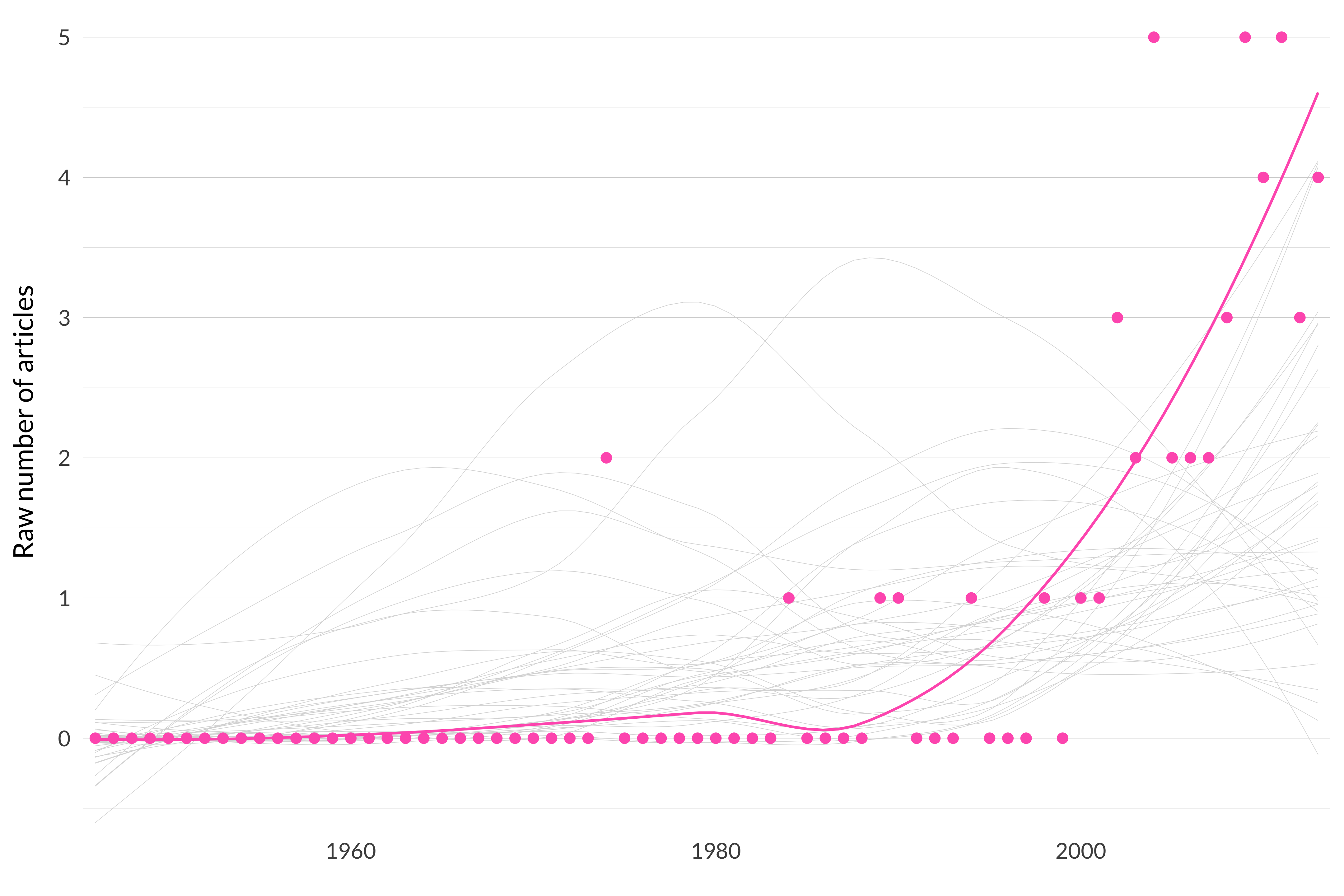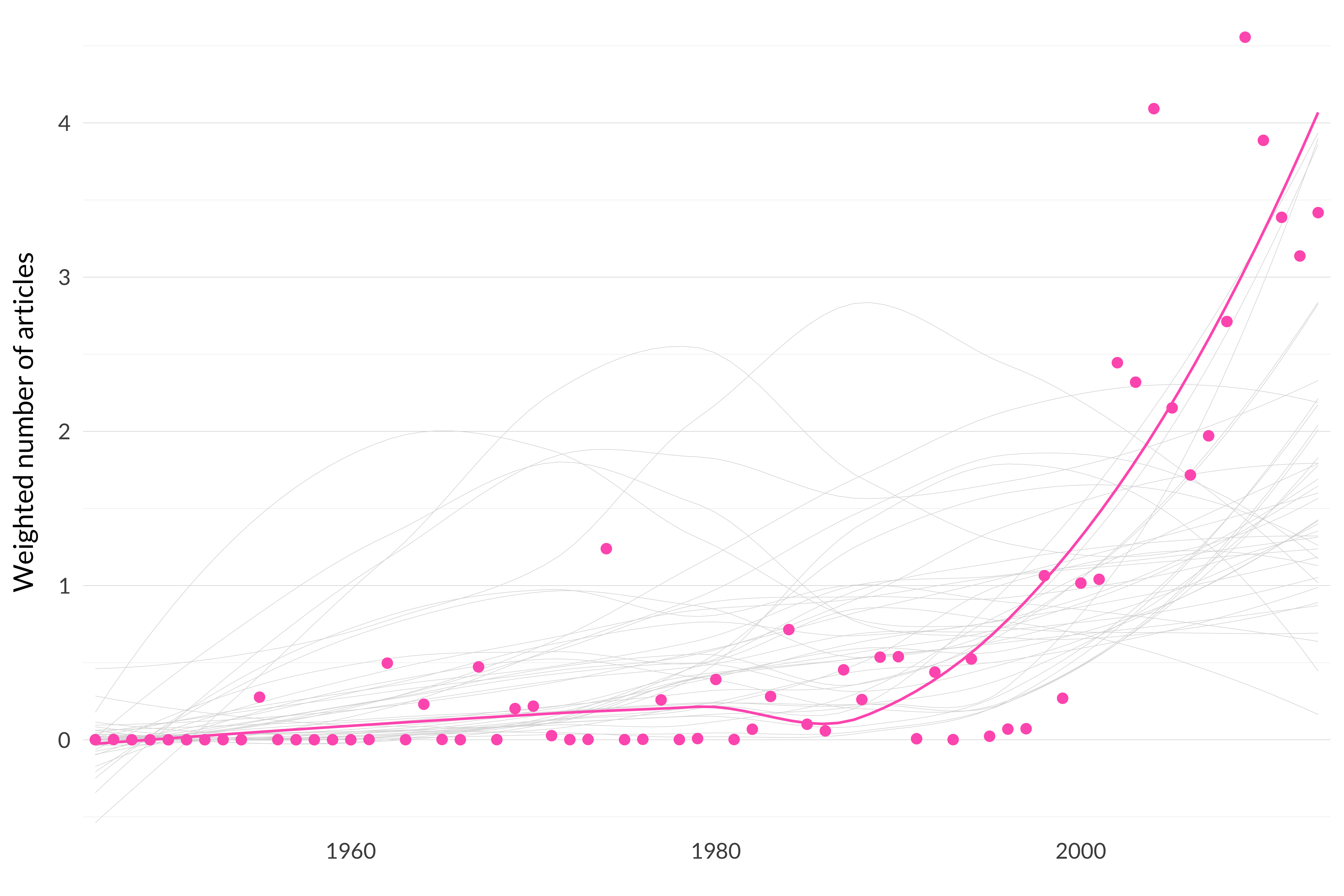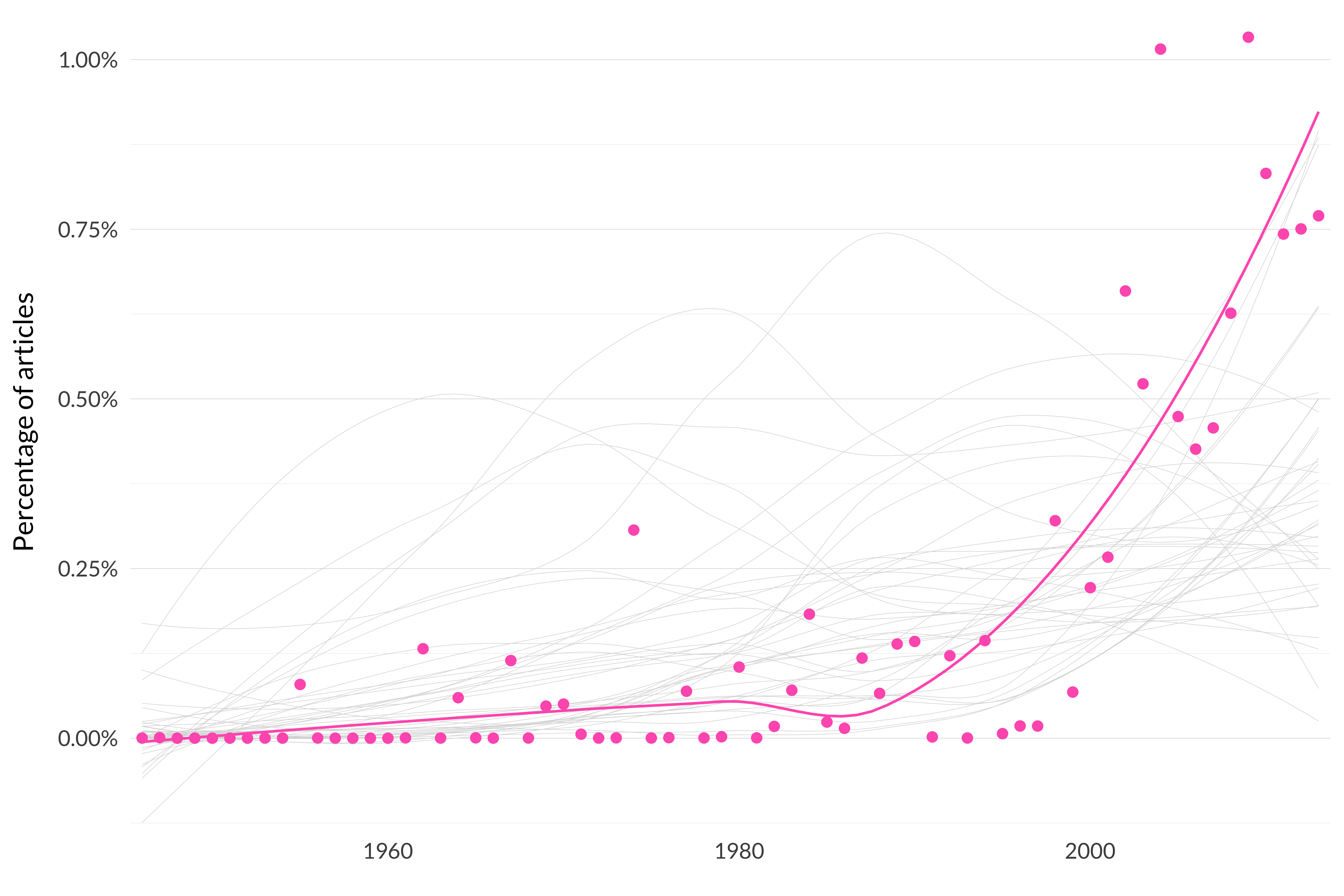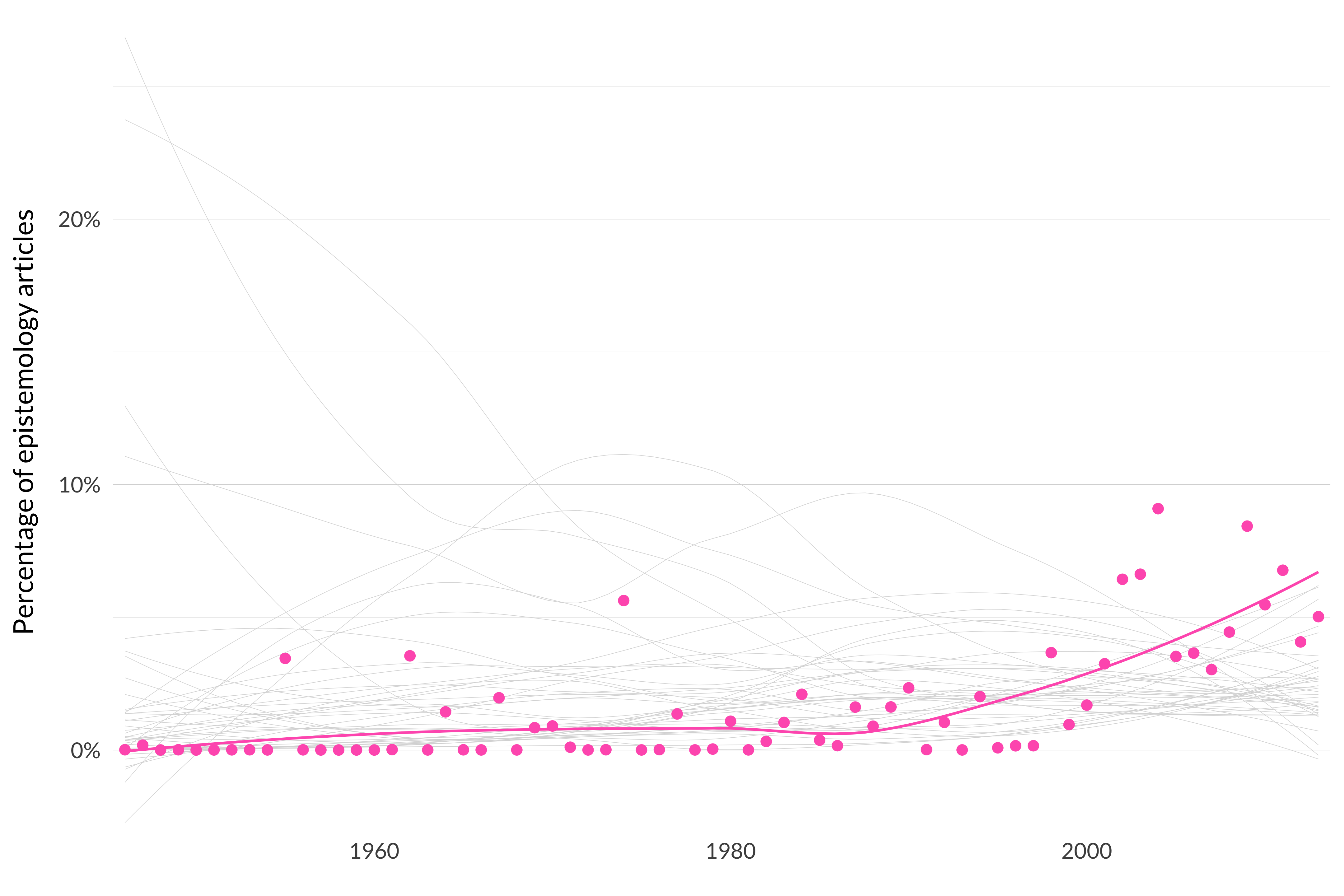6.37 Sleeping Beauty
Keywords: sleeping, beauty, heads, monday, toss, coin, tails, ball, times, outcome, procedure, white, credence, small, evil
Number of articles: 49
Weighted number of articles: 47.20837

Figure 6.153: Raw number of articles in topic 37, sleeping beauty.

Figure 6.154: Weighted number of articles in topic 37, sleeping beauty.

Figure 6.155: Percentage of philosophy articles in topic 37, sleeping beauty.

Figure 6.156: Percentage of epistemology articles in topic 37, sleeping beauty.
Characteristic Articles
- Ruth Weintraub, 2004, “Sleeping Beauty: A Simple Solution,” Analysis 64:8–10.
- Hannes Leitgeb, 2010, “Sleeping Beauty and Eternal Recurrence,” Analysis 70:203–5.
- Darren Bradley, 2003, “Sleeping Beauty: A Note on Dorr’s Argument for 13,” Analysis 63:266–8.
- David Papineau and Víctor Dura-Vilà, 2009, “Reply to Lewis: Metaphysics Versus Epistemology,” Analysis 69:89–91.
- Adam Elga, 2000, “Self-Locating Belief and the Sleeping Beauty Problem,” Analysis 60:143–7.
- Roger White, 2006, “The Generalized Sleeping Beauty Problem: A Challenge for Thirders,” Analysis 66:114–9.
- Peter J. Lewis, 2007, “Quantum Sleeping Beauty,” Analysis 67:59–65.
- David Papineau and Victor Dura-Vila, 2009, “A Thirder and an Everettian: A Reply to Lewis’s ’ Quantum Sleeping Beauty’,” Analysis 69:78–86.
- Darren Bradley, 2012, “Four Problems About Self-Locating Belief,” Philosophical Review 121:149–77.
- Michael G. Titelbaum, 2008, “The Relevance of Self-Locating Beliefs,” Philosophical Review 117:555–605.
Highly Cited Articles
- Adam Elga, 2000, “Self-Locating Belief and the Sleeping Beauty Problem,” Analysis 60:143–7. (0.9980371)
- David Lewis, 2001, “Sleeping Beauty: Reply to Elga,” Analysis 61:171–6. (0.969058)